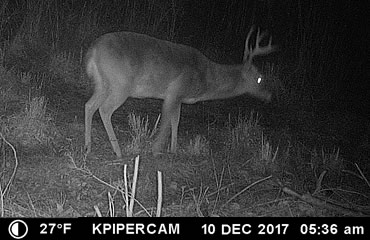Of course deer hunters set up near trails – whitetails are creatures of habit and often use the same trails to move throughout their range.
As long as food sources remain relatively stable, they won’t change their habits much from one day to the next.
A trail by itself doesn’t mean much, however.
First, bucks and does tend to use different trails. Heavy, main trails are mostly used by does and fawns. If you’re horn hunting, look for less noticeable trails that parallel the main trail – these are often buck trails.
When possible, set up in such a way that you can shoot to both trails without being too close to either. If conditions force you to make a choice between the two, you’ll have to consider if you would rather hold out for a big buck or have a better chance to take a doe.
Another overlooked consideration regarding trails is the time of day deer are using them. You wouldn’t want to set up on a trail used only after shooting light has expired, but how do you know if that’s the case?
Trail cameras are one great tool for the obvious reasons. But you don’t have to have trail cameras to make solid guesses about when and how various trails are used.
Since deer often use different trails to enter and exit fields and food plots, if you can determine which trails are used when, you’ll know which stand to hunt in mornings versus evenings. A rub indicates which way a buck was going when he made it, so you can make a good guess about whether the nearby trail is a morning or evening trail. You can also study tracks to determine direction. If most of the deer are heading to a field, it’s an evening trail; away means morning.
Also consider where you are in relation to the trail. Are you near bedding, staging or feeding areas? The location tells you when to expect activity.
As with other deer sign, don’t make your plans based on simply what looks fresh. Hunt along trails, but include other sign and observations into your planning and setup.
Read Recent Tip of the Week:• Phone It In: We can debate whether cell phones have made our lives better or worse, but there's no debate about how much we use them. That includes in the deer stand.




.png)